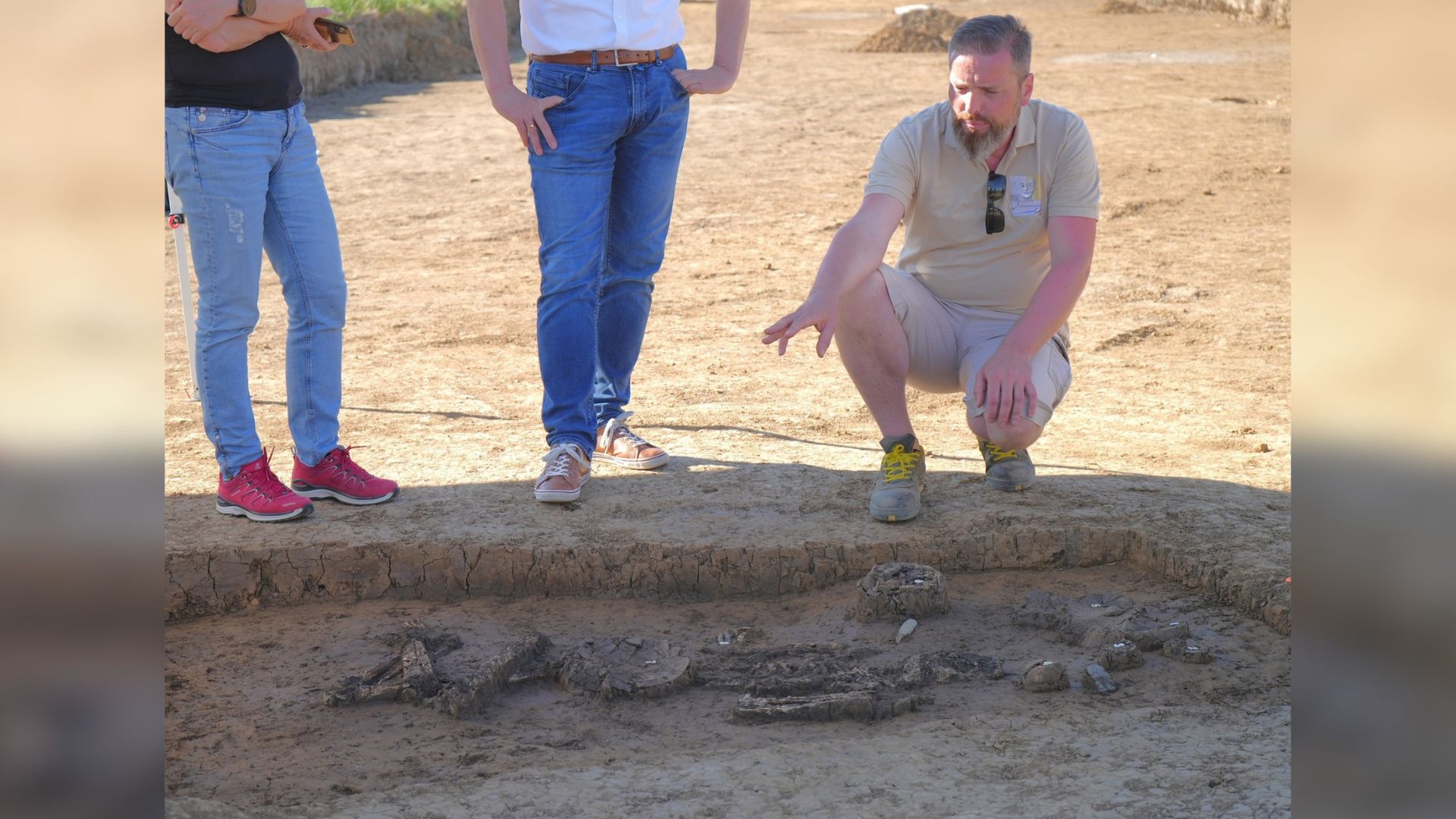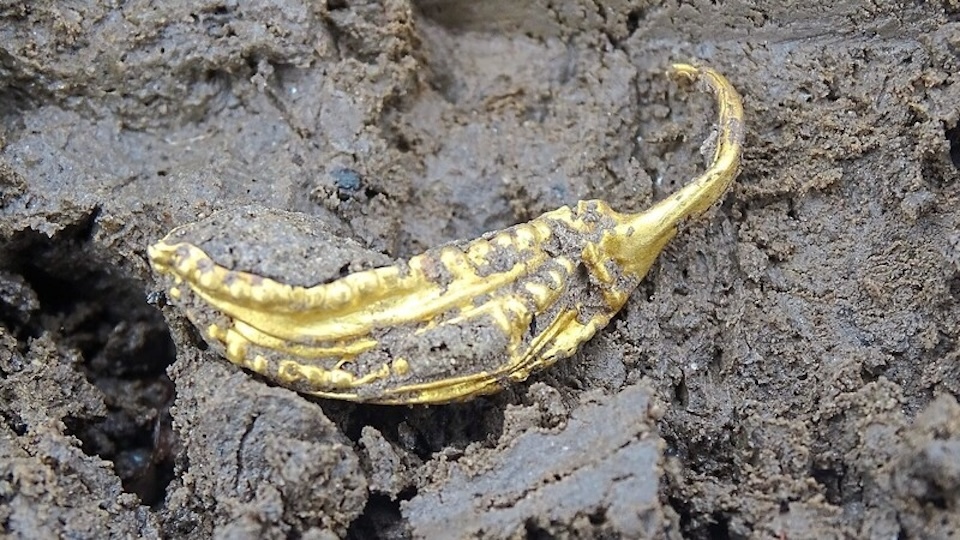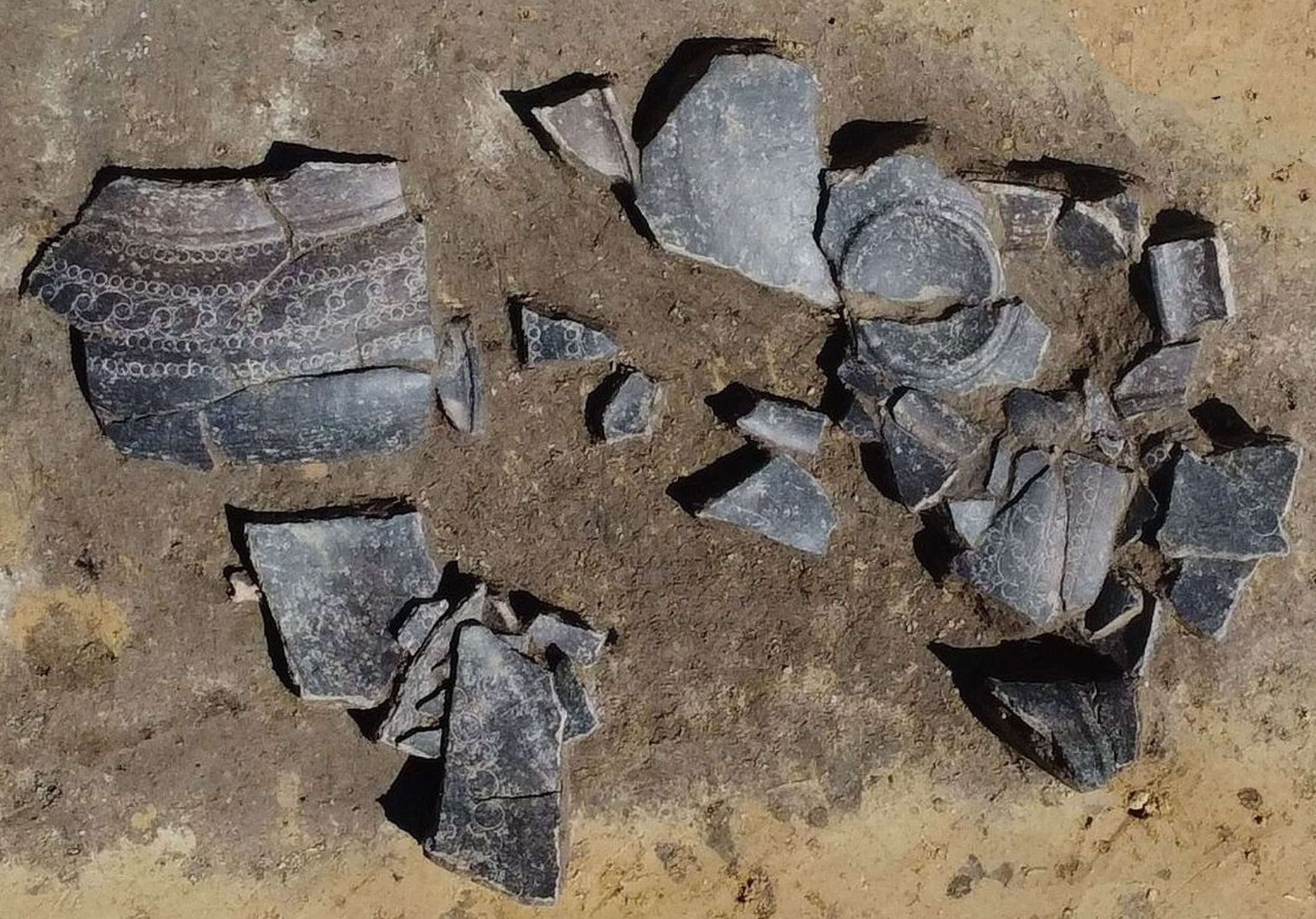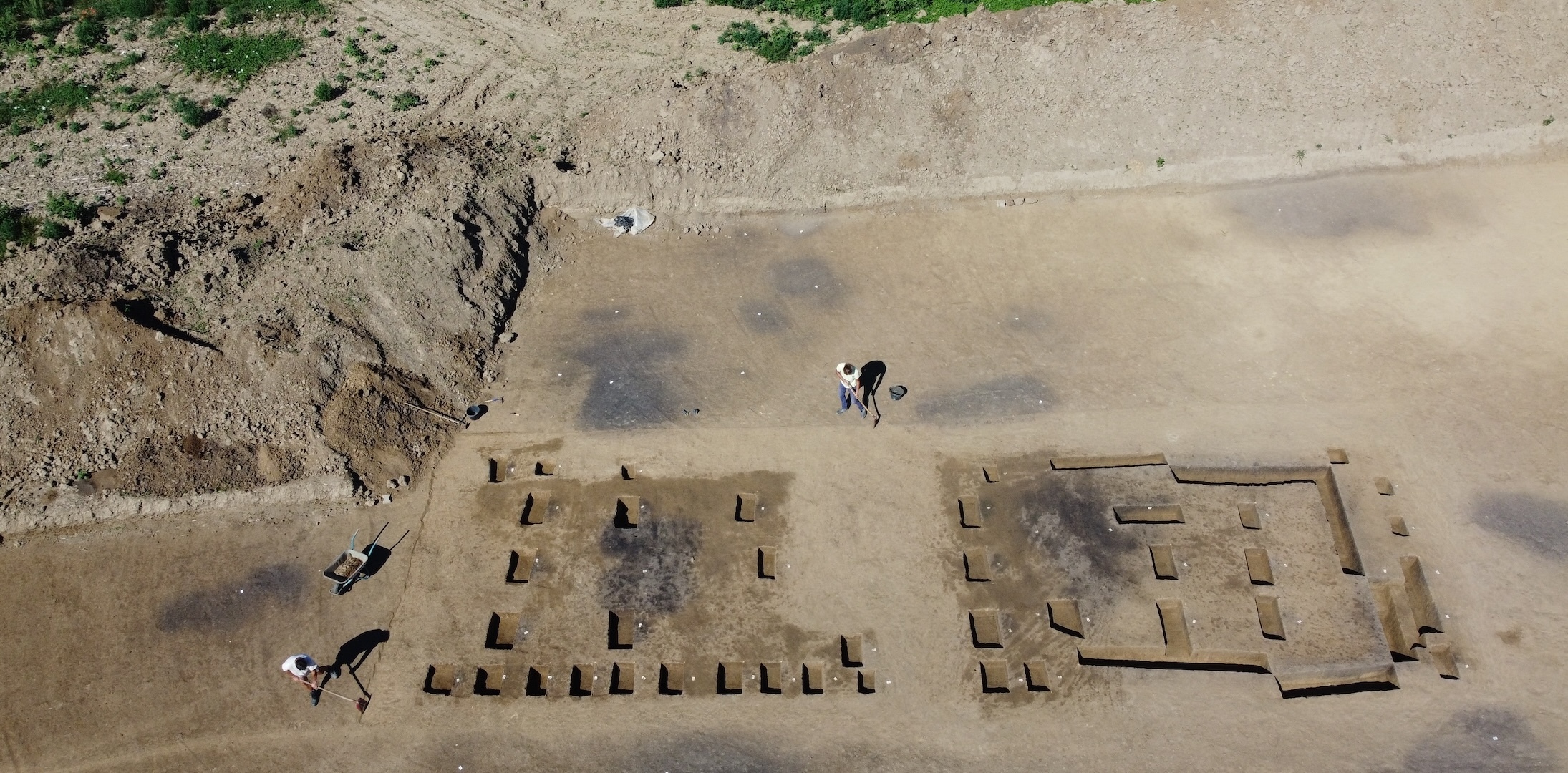6,800-year-old burial of Neolithic 'mayor' unearthed in Bavaria
The wealth of grave goods suggests the person buried there was a leader of high status — possibly a Stone Age chieftain.

About 6,800 years ago, a "mayor" was buried with a wealth of food and riches, including a halved boar's tooth, according to archaeologists who found the rare burial in southern Germany.
The mayor's Middle Neolithic remains were found near the Bavarian town of Eichendorf, close to Munich and Germany's southeastern borders with Austria and the Czech Republic. According to the local government of Bavaria's Dingolfing-Landau district, the discovery was made last week by district archaeologists excavating at the village of Exing, about 1 mile (1.6 kilometers) to the west.
The person in the grave was buried with food and drink for the afterlife; dyes for body painting; a stone ax and a stone adze; and a boar's tooth split in two.
The rich grave goods indicate that the person buried there was of high status, possibly an elder or a chieftain — and archaeologists have dubbed them "The Mayor."
The investigation hasn't yet determined how old the person was when they died, or whether they were male or female.
Related: 'Octagonal' sword from Bronze Age burial in Germany is so well preserved, it shines

Rich grave
District archaeologist Florian Eibl told the German outlet Der Spiegel that it was unusual to find human remains in a grave from this time and at this place, as very few Neolithic skeletons have survived.
Sign up for the Live Science daily newsletter now
Get the world’s most fascinating discoveries delivered straight to your inbox.
In addition, he said, the finds indicated a person of special position who was older in years and had probably earned their wealth and status, rather than inherited it.
The two parts of a boar's tooth were probably two halves of a container that had once held a flint blade and tools for making fire — a symbol of status, because hunting wild boars was dangerous at that time, he said.
The person in the grave was buried in a squatting position, and several vessels had been placed around their head — but it's not yet known what they originally held.
A drinking vessel placed in front of the skeleton's face was probably their personal cup, and stone blades were also placed in the grave.


Archaeological site
Archaeologists from the district government have worked on excavations at Exing since 2023, ahead of a residential development there.
The spectacular finds from Exing span roughly 7,000 years, from the Neolithic through to the Copper and Bronze Ages, including pieces of gold jewelry.
Eibl said the area was important during the Neolithic period for its rich settlements such as Köthingeichendorf, which was a center of importance throughout Europe at that time.
The skeleton of "The Mayor" will now be examined on site by an anthropologist and have photographs taken to produce a precise 3D model. The technique, known as photogrammetry, involves stitching multiple digital images together to make a virtual model.
Tom Metcalfe is a freelance journalist and regular Live Science contributor who is based in London in the United Kingdom. Tom writes mainly about science, space, archaeology, the Earth and the oceans. He has also written for the BBC, NBC News, National Geographic, Scientific American, Air & Space, and many others.









